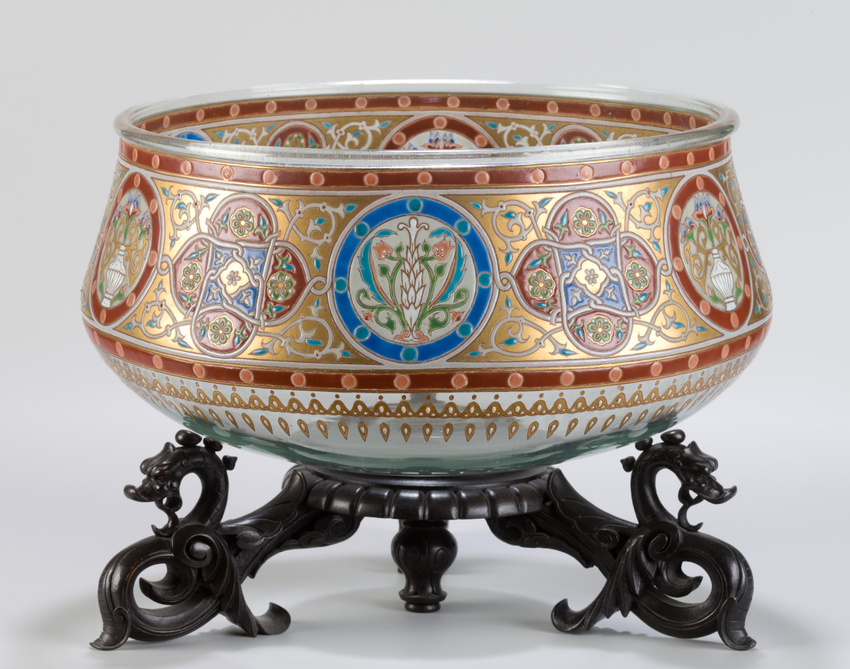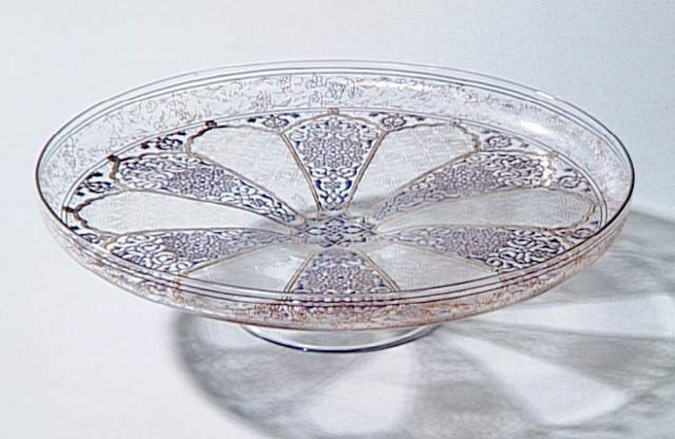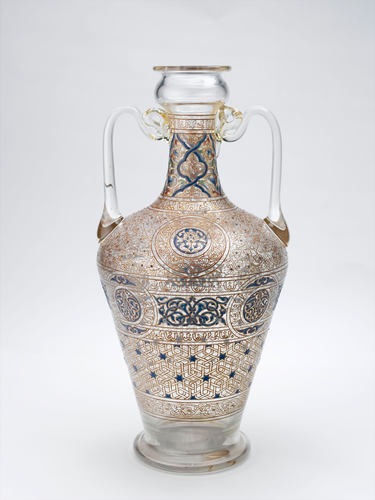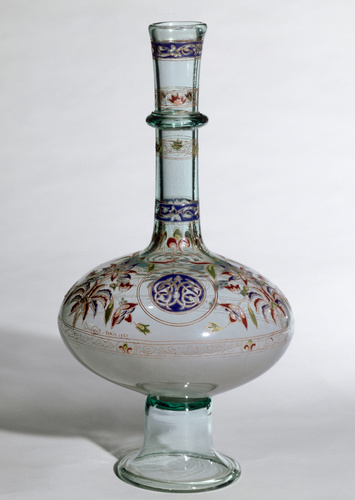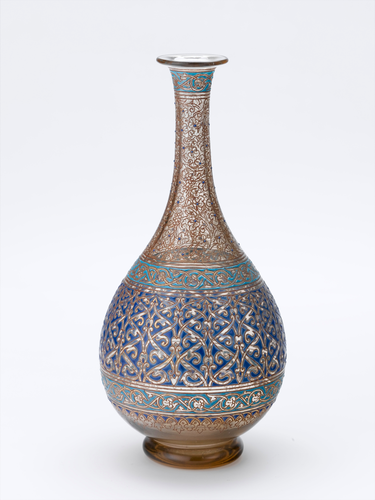Bassin
Little is known about Brocard's life: he was probably self-taught and a collector and restorer of objets d'art. His production, on the other hand, was first presented at the 1867 Universal Exhibition in Paris, and then in all the great industrial fairs of the second half of the nineteenth century. It was awarded the highest prizes and attracted the attention of the great decorative arts museums of the time.
This bowl featured in the International Exhibition in London in 1871, an example of the vitality of France's artistic industry following her defeat by Prussia. This is one of the artist's most accomplished pieces.
From a technical point of view, Brocard managed to develop a type of glass perfectly suited to the application of hard enamels and reliefs. These opaque or translucent enamels produced powerful and rich decorative effects. In their intensity, they surpass the models that inspired them, specifically the 13th and 14th century glassware from Egypt and Syria.
In addition this piece demonstrates the quality that an eclectic approach could achieve, when the interplay of transpositions was handled with intelligence and perspicacity. We are not dealing with pastiche here, but with the process of creativity.
The unifying theme is the translation into glass of copper and brass bowls, incrusted with silver and gold, so typical of art of the bronze smiths of the Fars school in 14th century Iran. However the dragons on the supports have nothing to do with the Middle East. They go back to the bronzes of the Far East, another source to stimulate the imagination of European decorators.
